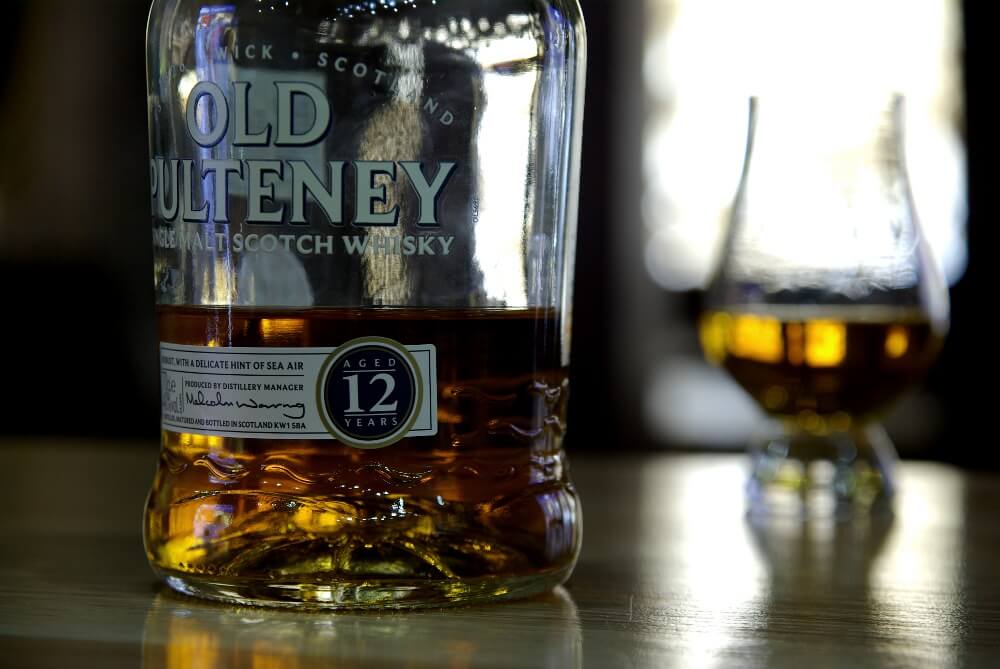Making Whisky – Facts & Figures
Love Old Pulteney and want to find out more about how we craft the fine single malt in your glass?
Read more
Discover more about the alcohol content of the whisky in your glass…
Alcohol content in single malt whisky is not its defining feature but it may be an indicator of what the distiller had in mind when releasing a particular expression or what kind of treatment it received prior to bottling. Here we clarify the basics and give you an insight into how the ABV of a whisky is determined.
The new make spirit which comes off the spirit still at the distillery has the average strength of 68.8% ABV. That’s a lot but as soon as spirit is poured into casks and placed in a warehouse, it starts evaporating. As alcohol evaporates quicker than water, the ABV starts dropping from day one and the process continues until the day the cask is emptied. This is referred to by distillers as angel’s share and by law may not exceed 2% of total volume per year. In reality the angel’s share is much smaller.
So how strong is old Pulteney when the cask is emptied? This depends on a number of factors including the type of casks and its quality, type of warehouse or even the position of the cask within it. But just to give you an example a 15 year old ex-bourbon cask which is currently available at the distillery Visitor Centre to hand-fill your own bottle from has 54.4% ABV. It has lost quite a bit but it’s still very strong. We have kept it at its natural strength as a treat for our visitors. This is referred to as cask strength.
While cask strength is a nice way to showcase a single cask or commemorative liquid, vast majority of whisky is cut down to a consistent strength, usually 40% which is a comfortable strength for enjoying the drink and also the minimum legal strength for Scotch whisky. Old Pulteney 12 Year Old is bottled at 40% ABV.
But while 40% is the minimum strength, certain expressions call for a bit more. Old Pulteney 17 Year Old, Old Pulteney 21 Year Old or the Lighthouse Collection expressions all feature a strength of 46% ABV. Why? There are several reasons. Extra strength allows whisky enthusiasts to add a bit of water to their dram while keeping the strength of the final serve still at or above 40%. A splash of fresh water helps to open up the aroma of whisky and it’s a very popular way to drink single malts in Scotland. Another reason for keeping the strength up is the possibility to avoid chill-filtration. Higher ABV means non chill-filtered whisky won’t go cloudy at room temperature… but that’s a topic for another time.
Whether it’s 40%, 46% or even 54.4%, the only thing that really matters is how it tastes and feels to you. Most people find their whisky strong enough at 40% and cutting it down even further with some spring water is commonplace. Master Blenders always dilute whisky samples to around 20% ABV before nosing. So don’t worry about the strength too much. It’s good to know what it means and why it is what it is but just as older isn’t always better, neither is stronger.
To visit our website, you must be of an age at which the purchase and consumption of alcohol is permitted according to the legislation in your country of residence.
If there are no laws on this matter, then you must be at least 18 years old.
Terms and ConditionsAlcohol abuse is dangerous to your health.
Drink Responsibly.